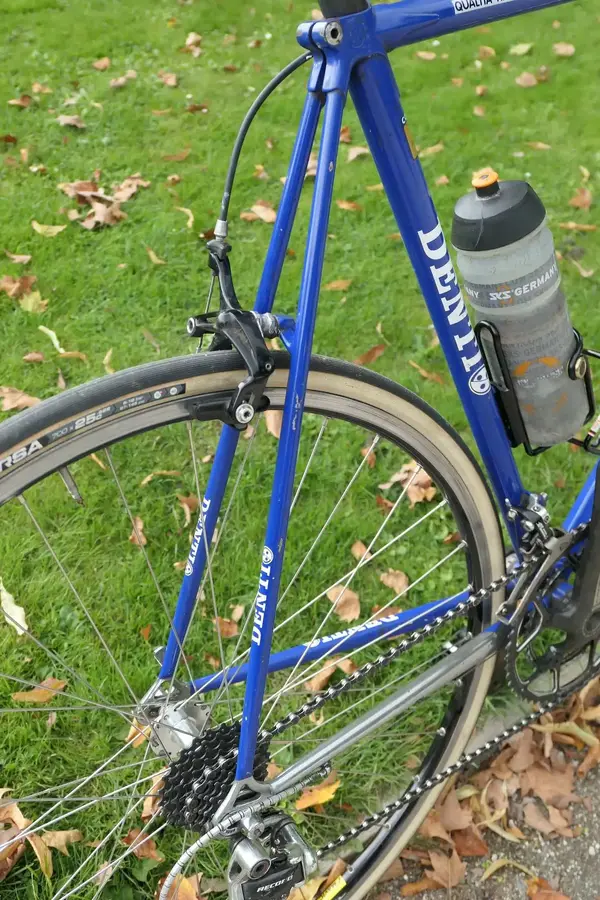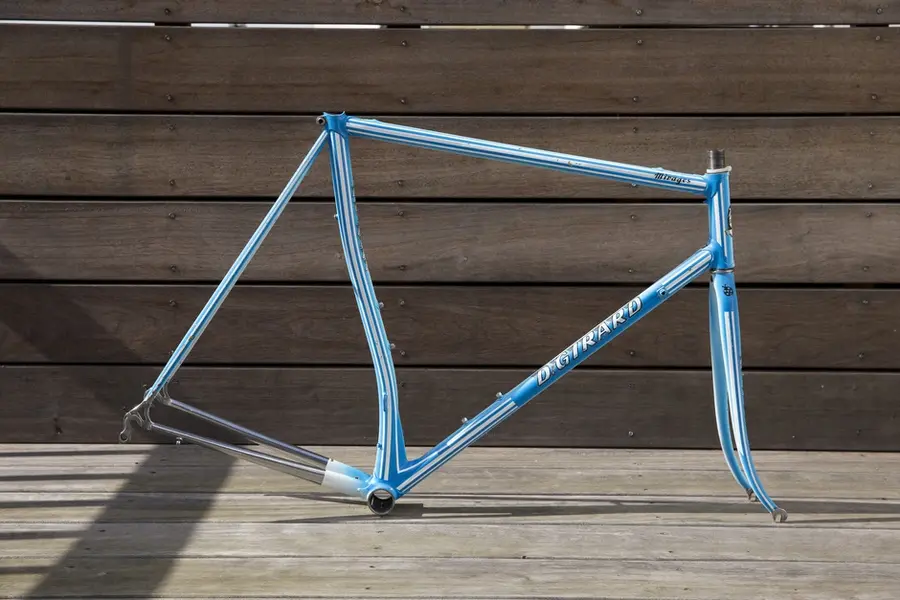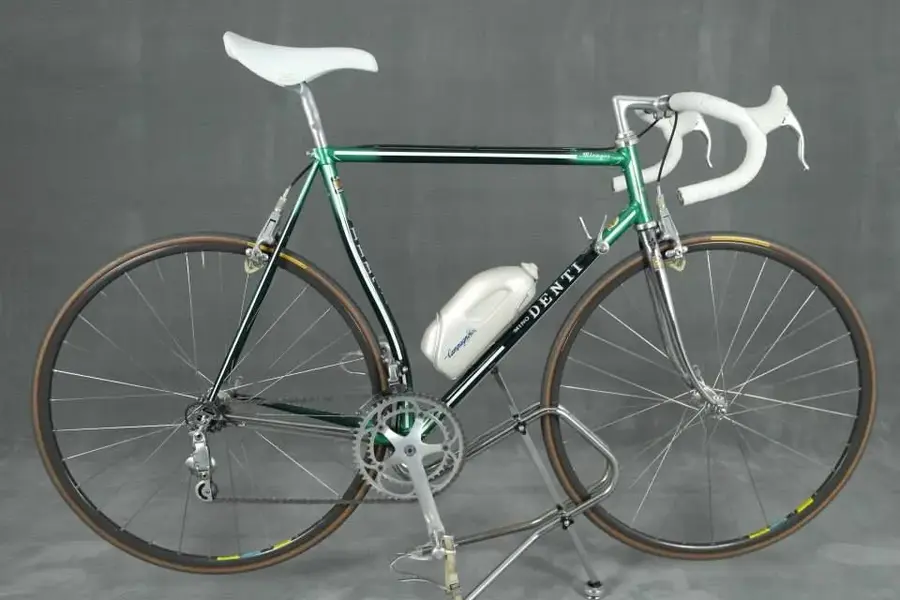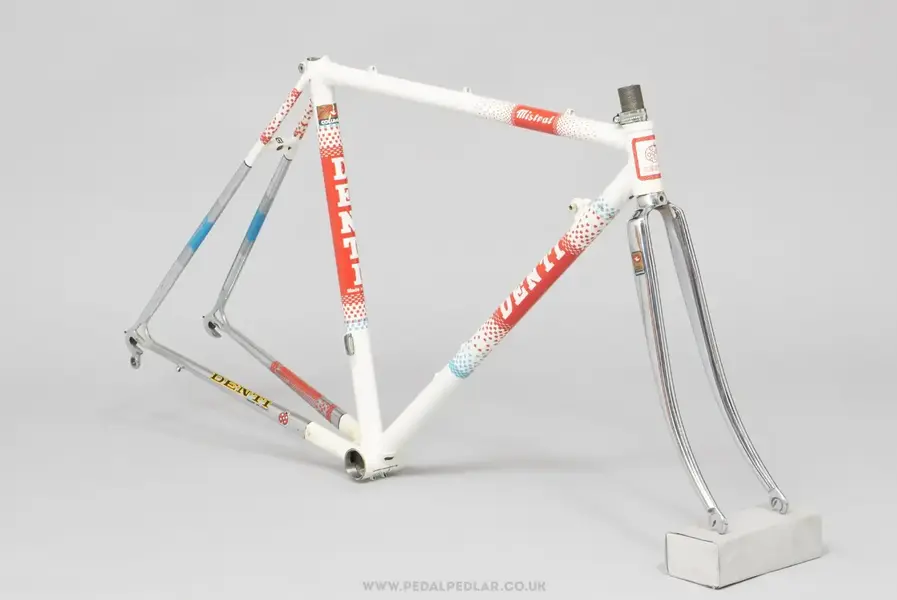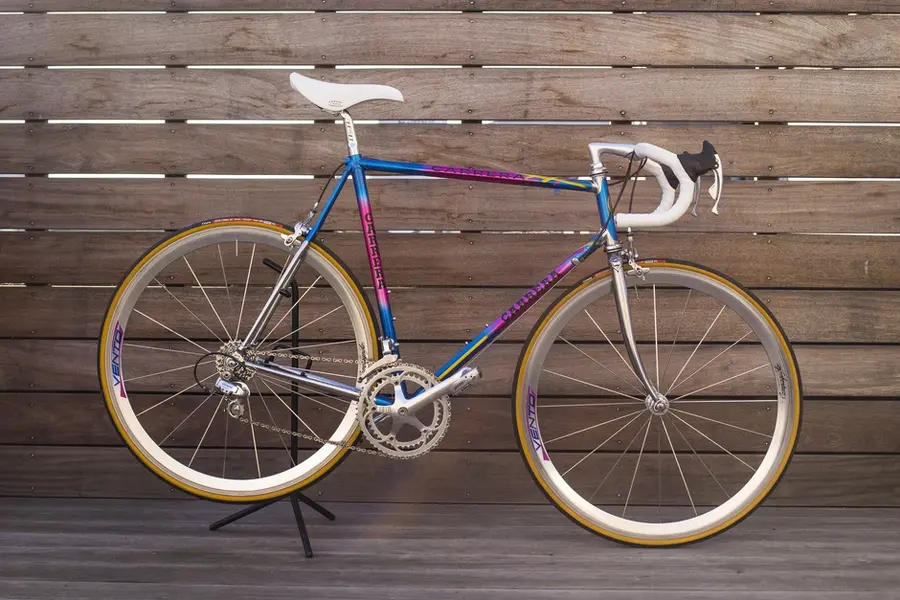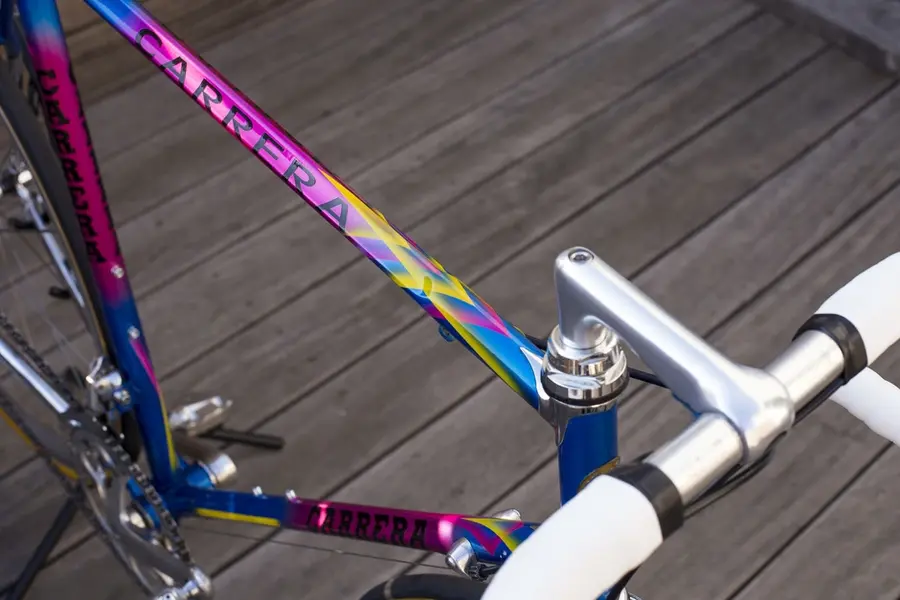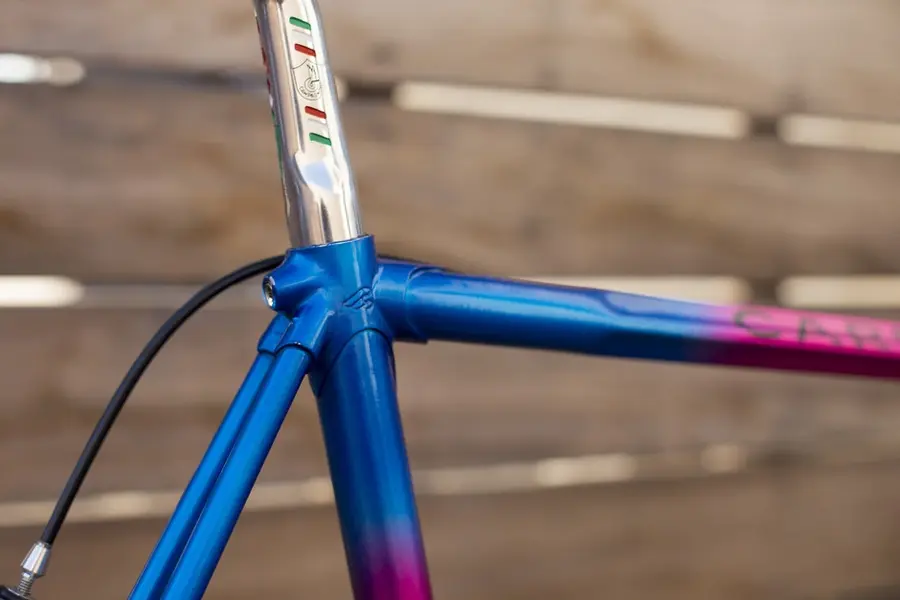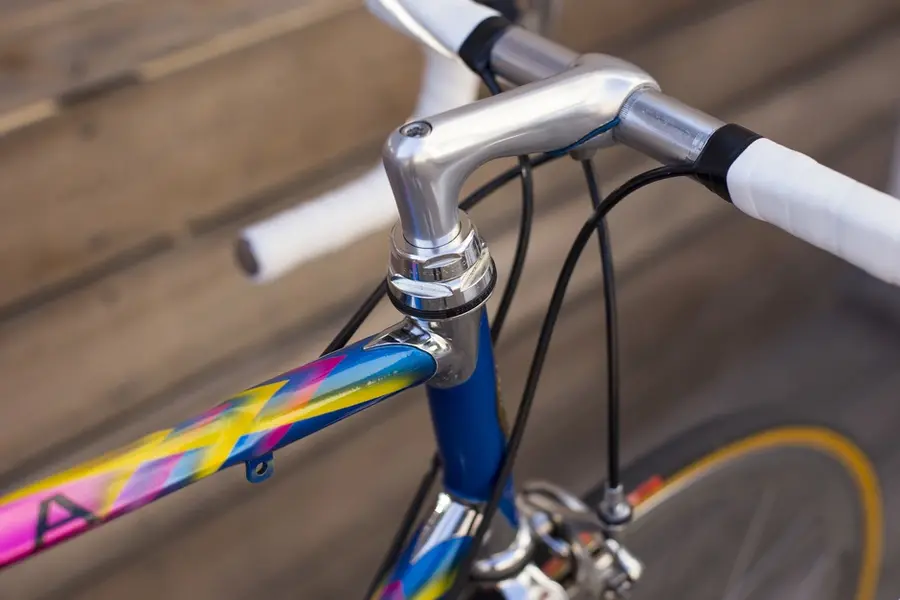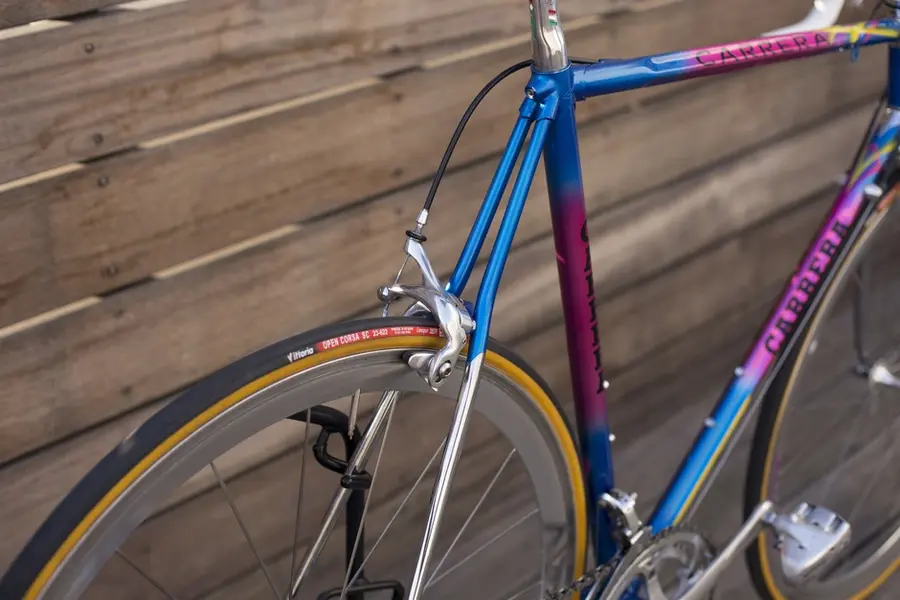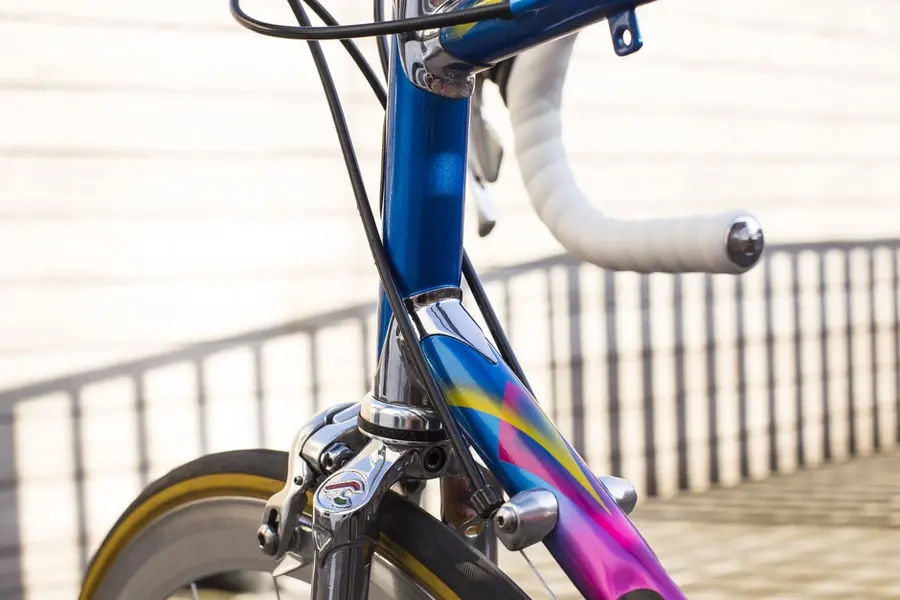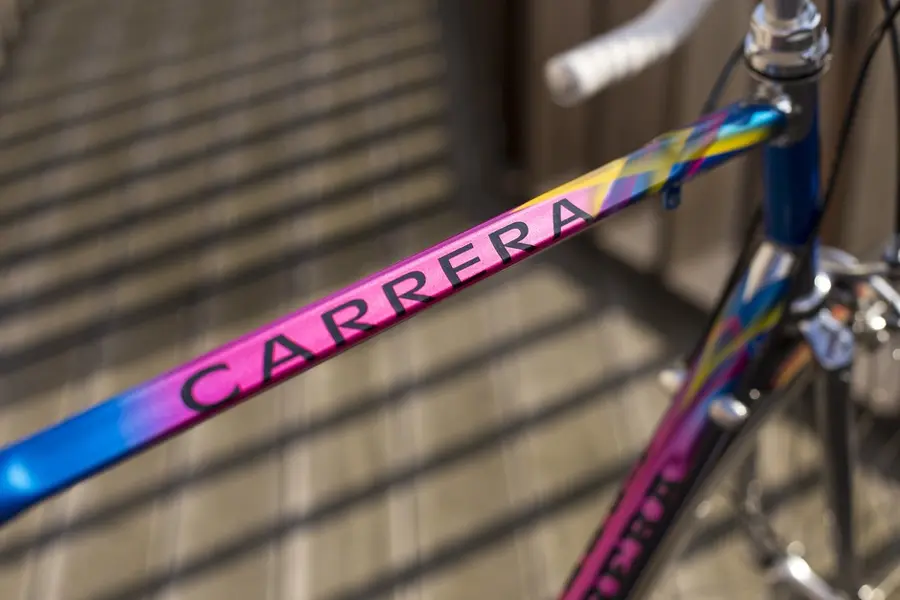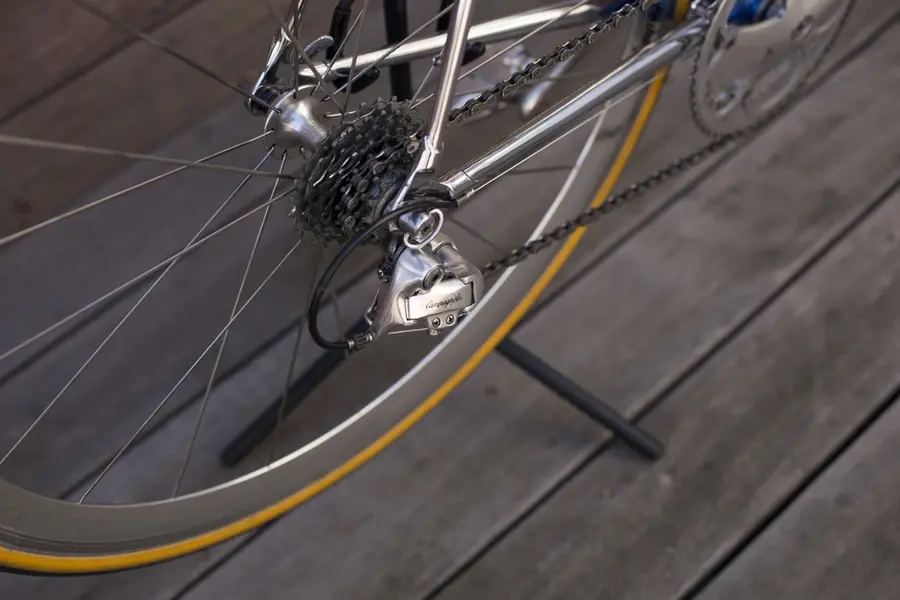Canuk
Old School Grand Master
Anyone any knowledge about Mino Denti frames, this one can be had for cheap. Not really into lo profile bikes, but hard to resist...
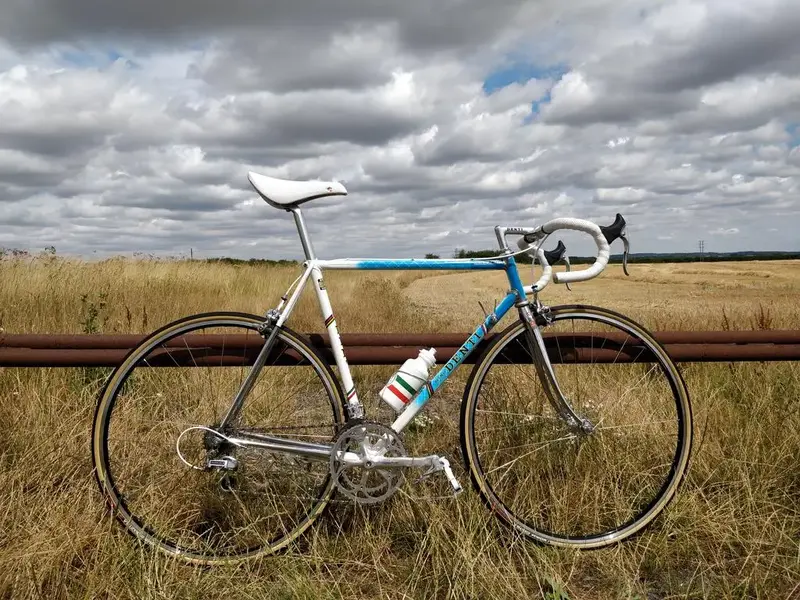
Maybe you already saw this little ladybug during your extensive hours of scrolling on the net. It may have been on a fork. Or maybe on a bicycle sticker. Or even on a jersey.
This is probably the most original logo for a bicycle brand. But the cuteness of the ladybug logo is hiding a terrific story. From the early 1960s to today, Giacomino DENTI, know as Mino Denti, never stop to accumulate wins, meeting the most excellent rider of his time and building impressive bikes that are simply pieces of art.
It all started around 1953: "My love for cycling started early, also thanks to the fact that Sergio Alzani, a professional rider, lived in front of my house in Soncino. I remember that when I was eight, I already knew all the cyclists because Sergio's father took me with him to see the races" - Mino Denti. The passion was lit; it only took a few part-time jobs to Mino Denti to afford his first bike.
The first of Denti's victory is in 1963, where he wins the Trofeo Amedeo Guizzi. Only one year later, his inspirational athlete Sergio Alzani got his first and only victory at the Trofeo Auro Boreri.
Then from 1963 to 1970, Denti accumulated impressive Palmares. He won the Tour de l'Avenir in 1966, a race created in 1961 that takes place in France and reserved to the cyclist below 23 years old. A race that surprisingly saw only 4 Italian winners in 59 years. At this period, Mino Denti was still an amateur riding for the GS Bresciana Pejo, but this impressive win indeed highlights him as a talented rider. In October 1966, he joined the Salvarini professional team.
According to Denti during his interview for inbici.net, this success is due to a specific person he met early in his career: "After the first years at Cremonese, through Alzani, I met Gino Piola, a person who always took care of taking me to training. But the one who had the most impact on the path before professionalism was my sporting director Gino «Mago» Riccardi. I think I was lucky to meet him; he had a very strong character, but he was also very prepared."
Or maybe the secret of Denti his in the daily 36 kilometers that he did from Soncino to Brescia: "I lived in Soncino and had to be with the team for training in Brescia. To save energy, knowing the timetables of all the buses that departed from my country, I met with the driver, offered him coffee, and he cut the wind with the vehicle."
As we say in French, Denti was not here to "enfilé des Perles" ( translate as string beads, mean doing the minimum ). From 1967 to 1970, the cyclist has an impressive palmarès; he intended to 65 cycling race in Europe. He also achieves impressive wins like the Giro del Veneto in 1969. During these three years, he moved to different teams such as Faema or SCIC. This allowed him to ride with incredible cyclists of his era, such as Eddy Merckx or Leandro Faggin. Eddy Merckx doesn't need to be present, but for those who don't know, Leandro Faggin was track pursuit world champion in 1954. By the way, we checked, and there is no link between the brand Faggin born in 1945 and Leandro Faggin.
But this brilliant career is brutally stopped in 1970 during the 5th stage of the Giro d'Italia. The 23 May 1970, Denti lose control of his bike by trying to avoid a cyclist that fell due to a car: "After facing the Crocedomini Pass, then with 16 km of dirt road, while we were on the descent of the Gaver, in pursuit of the four fugitives, a car came back from the pitch, hitting the cyclist in front of me. To avoid the impact, I lost control of the bike by going off the road and jumping forty meters". Evacuated in an ambulance, Mino Denti ended his brilliant career as a cyclist here.
But this only the beginning...
After 1970, Mino was out of the race but not out of passion. That's why he decided to create his own brand. He started by producing cycling gears: "A few months after the accident, after checking the earnings of my mother and my sister who were already garment makers, I decided to use my knowledge and start the knitwear business. At that time, there weren't that many specialized companies, and we found our space right away." In parallel, Denti had a long career as sports director from 1971 to 1983, mostly for amateur teams.
From the beginning, the ladybug is the official logo for Denti. We have been lucky to speak with Mino Denti, who explained to us the meaning of this logo: " Ladybug is a symbol of luck, and in sport, it takes athletic skills but also luck to perform and obtain results. "
It appears that Mino Denti started to craft a bicycle only in 1975; again, a few people have inspired him. One name, in particular, is well known in Italy and abroad: Piero Serena.
Piero Serena has been very active in the 70' and 80' era: "He was he responsible for some great Battaglin bikes of Carrera Jeans and gave advice on the geometry of Dancelli frames and some special time trial aerodynamic steel bikes. Visentini won the Giro d'Italia 1986 on one of his bikes as well." . Living in Brescia, the city where Denti was going for training during his professional cycling career, there is no doubt that Serena influenced Denti's work. We have not been able to find much information on Piero Serenna. We know that he died in 2005, but his legacy also inspired younger frame builders such as Mattia Paganotti from Legor Cicli. In a trip in Italy where he met other masters such as Zullo and Lissignori, he also met Piero's wife: "The Piero's wife left me all of his tools, a gesture which for me was priceless, so I can say that, thanks to his work, his way of making bikes and his tools, I learned a lot about how to work." - Mattia Paganotti for Raw cycling magazine. We will dig into these pieces of information, hoping to offer you a complete article on Piero Serena. His work highly deserves to be more documented!
Between the late 70' and late 80' Mino Denti collaborated with Guido Pitozzi, the founder of Piton: " I worked in partnership from 1978 to 1988 with Guido Pitozzi, then we dissolved the company and Pitozzi created the Piton logo and I continued with my name and logo." A few Denti frames made their way to the U.S., like Jim Zaun's Denti: " I purchased this frame from a pro bike shop in San Diego after my Masi was rear-ended by a car while waiting for a green light at an intersection in 1984. The bike shop owner had recently visited Italy and purchased a few of these Denti frames to take back to the states. The frames looked pretty nice, so I purchased one. I transferred most of the parts from the Masi to this frame. The wheels were completely rebuilt since the rear wheel on the Masi was crushed in the car accident. "
From 1980 to 1990, it has been a booming era for Denti. The brand even sponsored a Mexican team named Denti-Valtron. One of their members was nobody else than Raul Alcala! Raul Alcala competed on a professional level from 1985 to 1990. In 1984 competed in the Summer Olympics game in Los Angeles, finishing in the eleventh position. This outstanding achievement probably launches his professional career, where he was the first Mexican to compete at the Tour de France in 1986. In 1989 and 1990, he won a stage of the Tour de France and finished at 8th position of the overall ranking! Denti paved the way to one of the greatest riders of his era that belong to prestigious teams such as 7-eleven from 1986 to 1988 or Wordperfect in 1993. Today Raul Alcala is still very active by promoting cycling in his country and supporting the new generation of Mexican cycling athletes.
Around 1990 Mino Denti left the cycling business, while Salvi Ettore kept the Denti brand going until 2009. It seems that around 2013, Mino Denti decided to came back to the cycling business. Mino came back to do what he may not have been entirely able to do with mass production: share his knowledge and experience to produce unique bikes that fit unique people. Moreover, Denti is always an enthusiast to share his knowledge and skills, even for a vintage bike restoration. Today Denti is mostly using Dedacciai tubes. Even if he seems not to craft classic bikes anymore, we must admit that his last road bike creation is eye-catching and seems like the ultimate road machine.
→ ON THE MARKET ←
First things, Denti's bikes are rare. Despite the fact that they did mass production in the 80' and 90' it seems that they have never been sold overseas except maybe in the U.S. But because a professional team never rode these frames, their price is very reasonable. You will need to spend between 200 to 500€ for a nice Mino Denti frameset. When it comes to a complete bike, the most comfortable option will be to buy from a professional. It ensures to not spend years in research and to have a very lovely and safe bike. But it has a cost. You will pay around 1800€ for a Denti in Columbus Max equipped with Shimano Dura-Ace 7400 groupset per example.
Still, these are a unique piece to add to a collection or to ride every day. If you can not find your happiness on the second market, you can still contact Mino Denti directly and treat yourself with a great bike born from the hands of a cycling legend!
